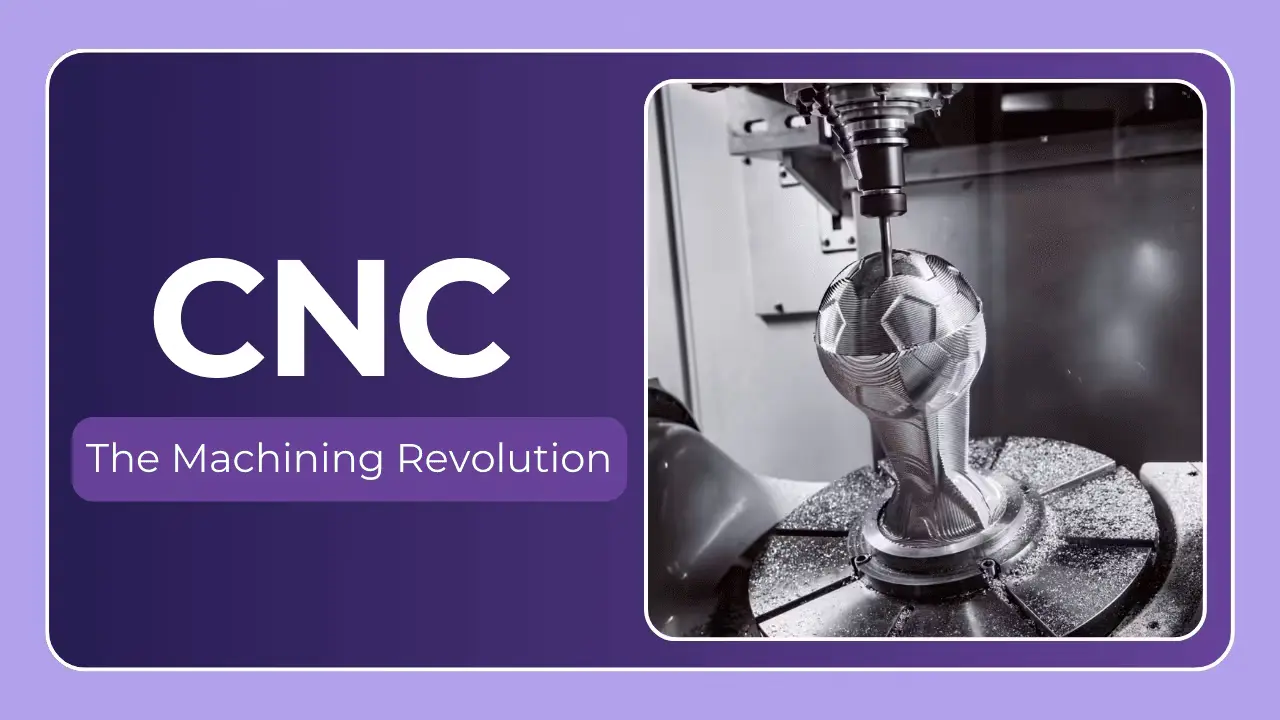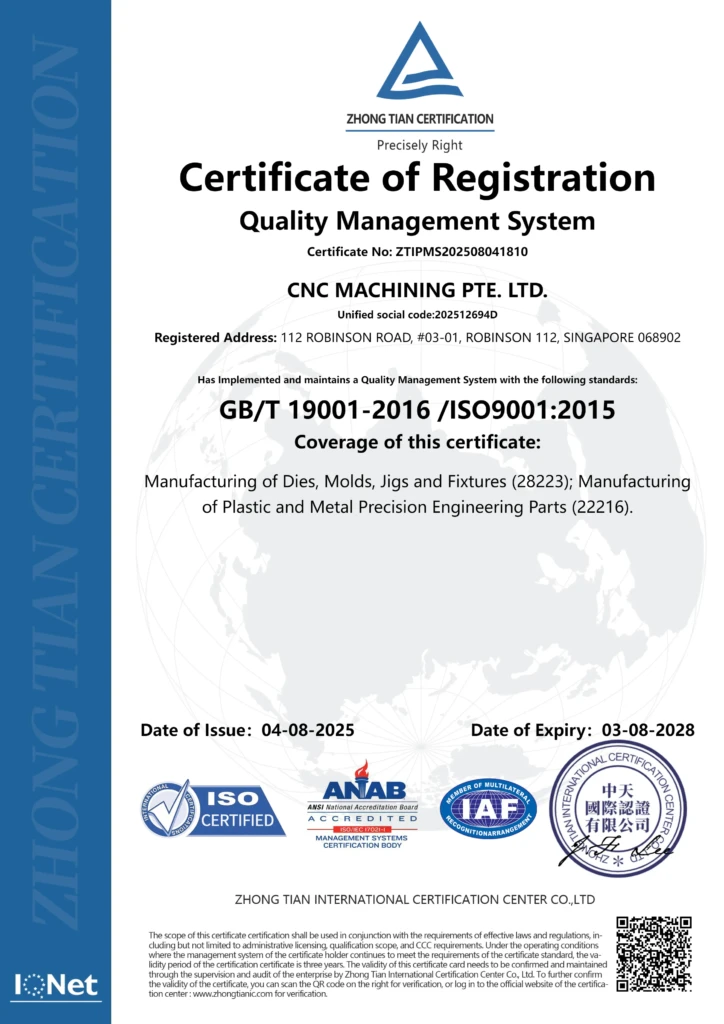Navigating the Complex World of CNC Aerospace Machining
The aerospace industry demands perfection. Components must withstand extreme conditions, operate with unwavering reliability, and adhere to incredibly tight tolerances. This is where CNC (Computer Numerical Control) machining, particularly five-axis CNC machining, becomes absolutely critical. It’s not just about cutting metal; it’s about enabling innovation, ensuring safety, and pushing the boundaries of what’s possible in flight and space.
This article delves into the intricacies of CNC aerospace machining, exploring the challenges, materials, processes, and the future trends shaping this vital sector. We’ll also highlight how a specialist like CNC MACHINING PTE. LTD in Singapore is equipped to meet these demanding requirements.
Why Aerospace Demands Precision: The Stakes are High
Unlike many other industries, failure in aerospace isn’t an option. A faulty component can have catastrophic consequences. This necessitates a level of precision and quality control that far exceeds typical manufacturing standards. Here’s a breakdown of the key demands:
- Tight Tolerances: Aerospace components often require tolerances measured in microns (millionths of a meter). Achieving this level of accuracy is crucial for proper fit, function, and performance.
- Material Expertise: The materials used in aerospace are often exotic and challenging to machine – think titanium alloys, Inconel, and specialized aluminum blends. These materials are chosen for their strength-to-weight ratio, heat resistance, and corrosion resistance.
- Complex Geometries: Modern aircraft and spacecraft designs incorporate increasingly complex geometries, often requiring multi-axis machining capabilities.
- Traceability & Documentation: Rigorous documentation and traceability are essential for quality control, regulatory compliance (like AS9100 – more on that later), and ensuring the integrity of the supply chain.
- Lightweighting: Reducing weight is paramount in aerospace. CNC machining allows for the creation of optimized designs that minimize material usage without compromising structural integrity.
The Power of Five-Axis CNC Machining in Aerospace
While three-axis CNC machining is suitable for simpler parts, the aerospace industry frequently relies on five-axis machining. But what exactly is five-axis machining, and why is it so important?
Five-axis machining allows the cutting tool to move simultaneously along five different axes (X, Y, Z, and two rotational axes). This provides several key advantages:
- Complex Part Machining: It enables the machining of incredibly complex shapes and undercuts that are impossible or extremely difficult to achieve with traditional methods.
- Reduced Setup Times: By machining multiple sides of a part in a single setup, five-axis machining significantly reduces setup times and minimizes the risk of errors.
- Improved Surface Finish: The ability to orient the cutting tool optimally relative to the workpiece results in a superior surface finish.
- Higher Accuracy: Fewer setups translate to less accumulated error, leading to higher overall accuracy.
- Shorter Cycle Times: Optimized toolpaths and reduced setup times contribute to shorter cycle times and increased productivity.
Here’s a quick comparison:
| Feature | 3-Axis Machining | 5-Axis Machining |
|---|---|---|
| Complexity of Parts | Simple geometries | Highly complex geometries, undercuts |
| Setup Time | Multiple setups often required | Fewer setups, often single setup |
| Surface Finish | Good | Excellent |
| Accuracy | Moderate | High |
| Tool Access | Limited | Superior access to all surfaces |
| Cost (per part, complex shapes) | Higher | Lower |
Materials Commonly Machined in Aerospace
The choice of material is critical in aerospace applications. Here are some of the most frequently machined materials:
- Titanium Alloys (Ti-6Al-4V): Known for their high strength-to-weight ratio, corrosion resistance, and ability to withstand high temperatures. Challenging to machine due to its work hardening properties.
- Aluminum Alloys (7075, 6061): Lightweight and strong, commonly used for airframes and structural components. Requires careful chip evacuation to prevent re-cutting.
- Inconel (718, 625): Nickel-chromium superalloys offering exceptional high-temperature strength and corrosion resistance. Extremely difficult to machine, requiring specialized tooling and techniques.
- Stainless Steel (304, 316): Good corrosion resistance and strength, used for various components.
- Magnesium Alloys: Extremely lightweight, used in applications where weight reduction is critical. Requires careful handling due to its flammability.
- Composites (Carbon Fiber Reinforced Polymers – CFRP): Increasingly used for lightweight structures. Requires specialized diamond tooling and techniques to prevent delamination.
The CNC Aerospace Machining Process: A Step-by-Step Overview
- Design & Engineering: The process begins with a detailed CAD (Computer-Aided Design) model of the component.
- CAM Programming: The CAD model is then imported into CAM (Computer-Aided Manufacturing) software, where toolpaths are generated. This involves selecting appropriate cutting tools, defining cutting parameters (speed, feed rate, depth of cut), and optimizing the toolpath for efficiency and accuracy.
- Material Selection & Preparation: The appropriate material is selected based on the application requirements. The material is then prepared, which may involve cutting it to size, heat treating, or other pre-machining processes.
- Setup & Fixturing: The workpiece is securely fixtured on the CNC machine. Proper fixturing is crucial for maintaining accuracy and preventing vibration.
- Machining: The CNC machine executes the programmed toolpaths, removing material to create the desired shape.
- Inspection & Quality Control: The machined component is thoroughly inspected using various methods, including CMM (Coordinate Measuring Machine), optical comparators, and visual inspection.
- Post-Processing & Finishing: This may include deburring, polishing, anodizing, painting, or other finishing operations to meet specific requirements. CNC MACHINING PTE. LTD offers comprehensive one-stop post-processing services.
Quality Standards & Certifications: AS9100 and Beyond
The aerospace industry operates under stringent quality standards. AS9100 is the globally recognized quality management system standard for the aerospace industry. It’s based on ISO 9001 but includes additional requirements specific to aerospace, such as:
- First Article Inspection (FAI): A comprehensive inspection of the first part produced to verify that it meets all design and manufacturing requirements.
- Special Processes Control: Strict control of processes like heat treatment, welding, and non-destructive testing.
- Configuration Management: Ensuring that all design and manufacturing documentation is accurate and up-to-date.
- Risk Management: Identifying and mitigating potential risks throughout the manufacturing process.
Holding AS9100 certification demonstrates a commitment to quality and reliability, making it a crucial requirement for suppliers to the aerospace industry.
The Future of CNC Aerospace Machining
Several trends are shaping the future of CNC aerospace machining:
- Additive Manufacturing (3D Printing) Integration: Combining additive manufacturing for near-net-shape parts with CNC machining for finishing and tight tolerance features.
- Advanced Tooling Materials: Development of new cutting tool materials with improved wear resistance and performance.
- Digital Twin Technology: Creating virtual replicas of CNC machines and manufacturing processes to optimize performance and predict potential issues.
- Artificial Intelligence (AI) & Machine Learning (ML): Using AI and ML to optimize toolpaths, predict tool wear, and improve process control.
- Increased Automation: Implementing robotic loading and unloading systems to increase efficiency and reduce labor costs.
Conclusion: Partnering for Success in Aerospace
CNC aerospace machining is a complex and demanding field. Success requires not only advanced equipment and technology but also a deep understanding of materials, processes, and quality standards.
Companies like CNC MACHINING PTE. LTD in Singapore are uniquely positioned to meet these challenges. With their advanced five-axis CNC machining capabilities, expertise in exotic materials, commitment to quality (and the ability to achieve AS9100 certification), and comprehensive post-processing services, they offer a valuable partnership for aerospace companies seeking reliable and precise manufacturing solutions.
Don’t compromise on quality when the stakes are so high. Customize your precision parts now at the best price and experience the difference a dedicated and experienced CNC machining partner can make. The future of flight and space exploration depends on it.




